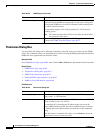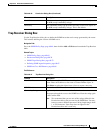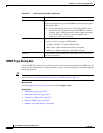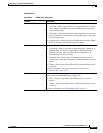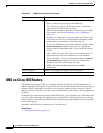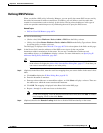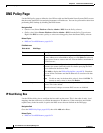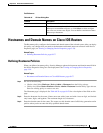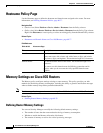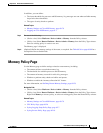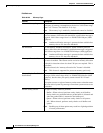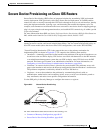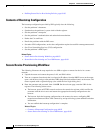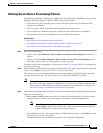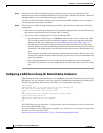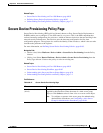
60-78
User Guide for Cisco Security Manager 4.4
OL-28826-01
Chapter 60 Router Device Administration
Hostname Policy Page
Hostname Policy Page
Use the Hostname page to define the hostname and domain name assigned to the router. For more
information, see Defining Hostname Policies, page 60-77.
Navigation Path
• (Device view) Select Platform > Device Admin > Hostname from the Policy selector.
• (Policy view) Select Router Platform > Device Admin > Hostname from the Policy Type selector.
Right-click Hostname to create a policy, or select an existing policy from the Shared Policy selector.
Related Topics
• Hostnames and Domain Names on Cisco IOS Routers, page 60-77
Field Reference
Memory Settings on Cisco IOS Routers
The Memory policy configures settings relating to router memory. This policy provides you with
methods for monitoring memory consumption, including the ability to generate notification messages
when available memory drops below predefined thresholds.
Note The Memory policy is supported on routers running Cisco IOS Software Release 12.3(14)T or later.
Related Topics
• Defining Router Memory Settings, page 60-78
Defining Router Memory Settings
You can use Security Manager to modify the following default memory settings:
• The number of hours that the router maintains the log of memory consumption.
• Whether to enable the Memory Allocation Lite feature.
• The amount of memory to reserve for critical system log messages.
Table 60-35 Hostname Page
Element Description
Host Name The hostname of the router.
Names must start with a letter, end with a letter or digit, and include
only letters, digits, and hyphens. The maximum length is 63 characters.
Domain Name The default domain name of the router. The maximum length is 63
characters.
The router uses this domain name for RSA key generation and in
policies when you do not enter the fully-qualified domain name
(FQDN).



